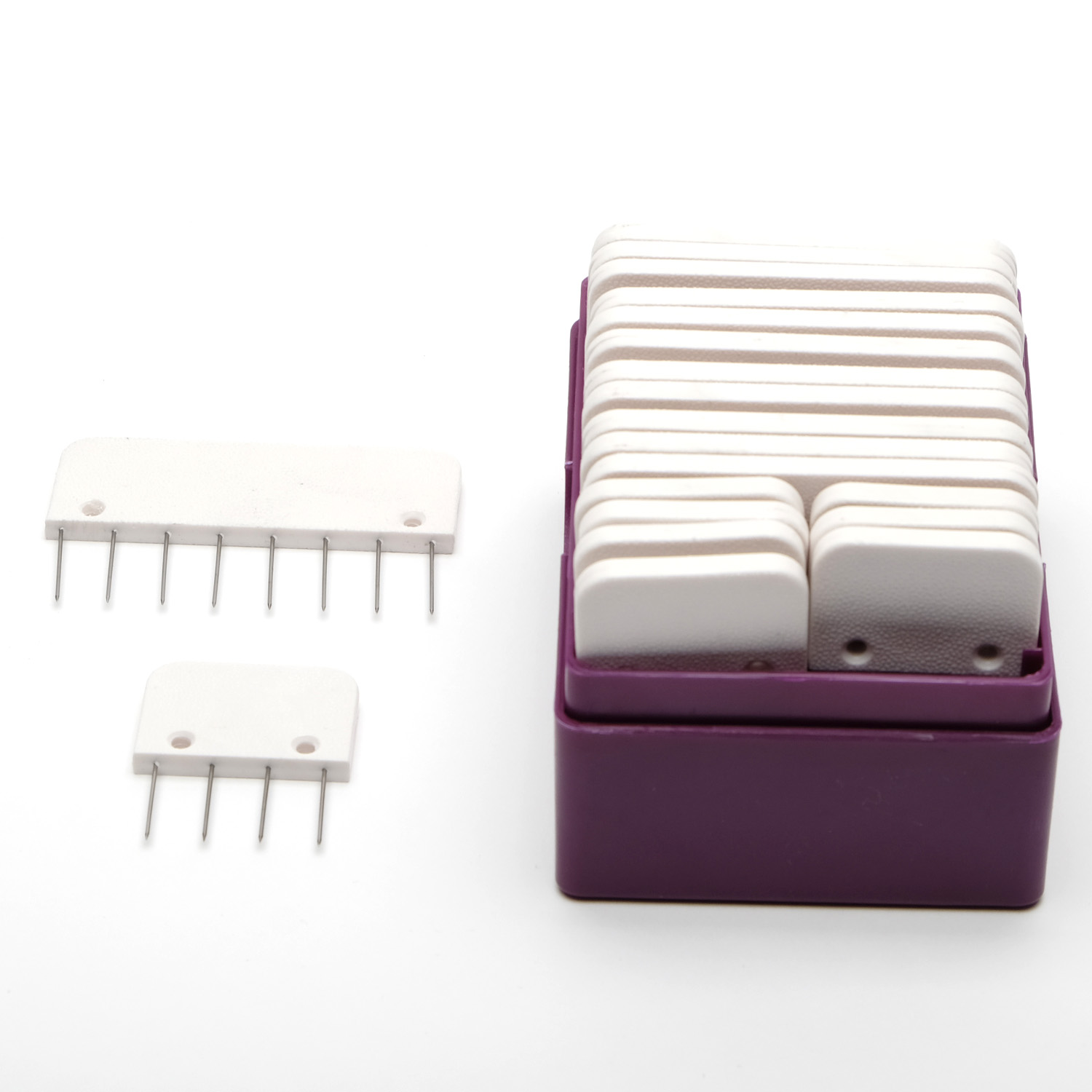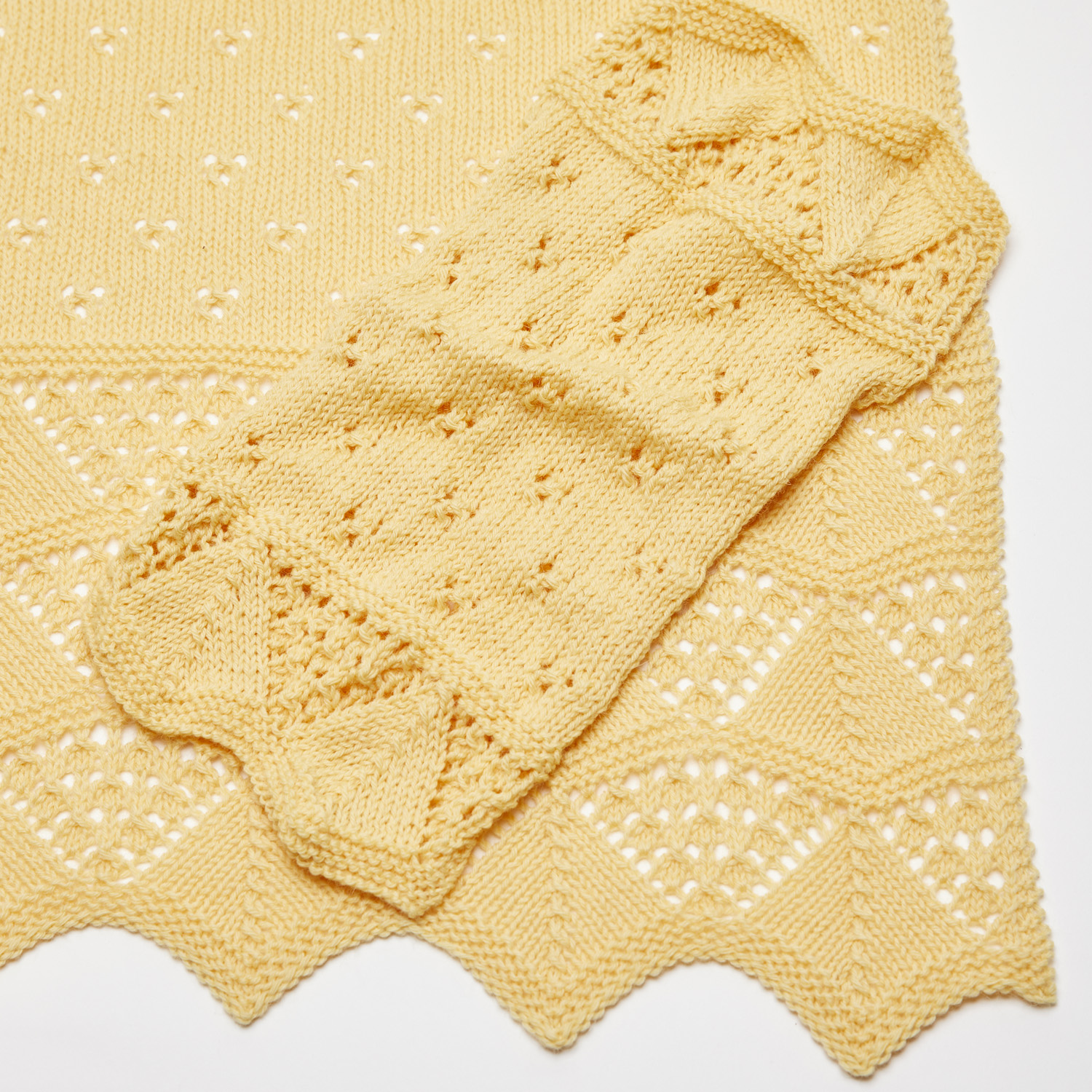Last week, we brought you a tutorial showing how to block a square or rectangular hap, or everyday shawl, using a blocking frame. Today, we bring you part two of this tutorial, using a frame to block a triangular hap or shawl.
Read moreHow to Block Using a Hap Stretcher, Part 1: Square or Rectangular Hap (Photo Tutorial)
We’re all about the blocking at the moment — Excellent Blocking is this month’s featured Confident Knitting technique. This month’s pair of video tutorials creatively use household objects (with the option to use flexible blocking wires) to achieve some really stellar blocking results. Today though, we thought it’d be fun to share a blocking tutorial of a different type from our archives: how to block a square hap!
Read moreLet's block, excellently! Two video tutorials to boost your lace blocking confidence
Blocking can be a really magical, transformative process, but its’s something that (and you can correct me if I’m wrong) knitters rarely get excited about. It’s consigned, along with swatching, to the list of things one should do when knitting something, much like eating your vegetables or drinking more water.
Read moreConfessions of a Lazy Blocker
I’ve spent the better part of the summer working on a full-sized Hansel Hap for the arrival of my first wee one in October. It’s been a pleasant knit, but a big one, so I was thrilled when I finished the last of the border edging points a weekend or two ago. On finishing, though, I was faced with a big question …. just how was I going to block it?
Read moreVideo: Blocking Using Pin Combs (Knit Blockers)
Have you come across pin combs before? I had seen them mentioned a while ago, but it wasn't until we started work on Something New to Learn About Lace that I got around to ordering a set. I have the KnitPro Knit Blockers that we now stock in the shop, and I absolutely love them! I have had a set of blocking wires for nearly ten years, and they get used a LOT. I find my wires so useful that it had never really occurred to me that I would want to use anything else for blocking lace. For peaked or scalloped edges, I think that wires are still the best way to go, but depending on the size of your project, pin combs are a brilliant way to pin out straight edges. They are certainly faster and easier than wires over short distances.
Read moreVideo: Blocking Lace Using Wires
Blocking lace is completely magical. You cast off, and have a piece of fabric that to be honest, could look like a tangled hair net, and transform it into a thing of beauty. The image above shows how different the unblocked mini-Aphaca scarf looks from the finished, blocked blanket. Blocking can be carried out with a minimum of equipment (just a clean, dry space, towel and some pins), but some extra bits and bobs can make the job far easier and faster. And faster blocking leaves more time for knitting, right?!
Read moreHow to... Use a Hap Blocking Frame
Blocking your knitting is one of the most satisfying and transformative processes. What starts out looking like a hair net, can be utterly changed by a good soak and stretch. While blocking has a place in the finishing of most knitwear, it is particularly vital when knitting lace patterns. Stretching out the wet lace and leaving it to dry reveals the beauty of the patterning in a way that's almost unimaginable when you are knitting the tangled-looking mess.
The following tutorial is going to show you how to use a hap blocking frame (aka hap stretcher) to block square, rectangular and right-angled triangle haps and shawls. Hap is the Shetland word for a shawl designed for everyday wear.
Read more


